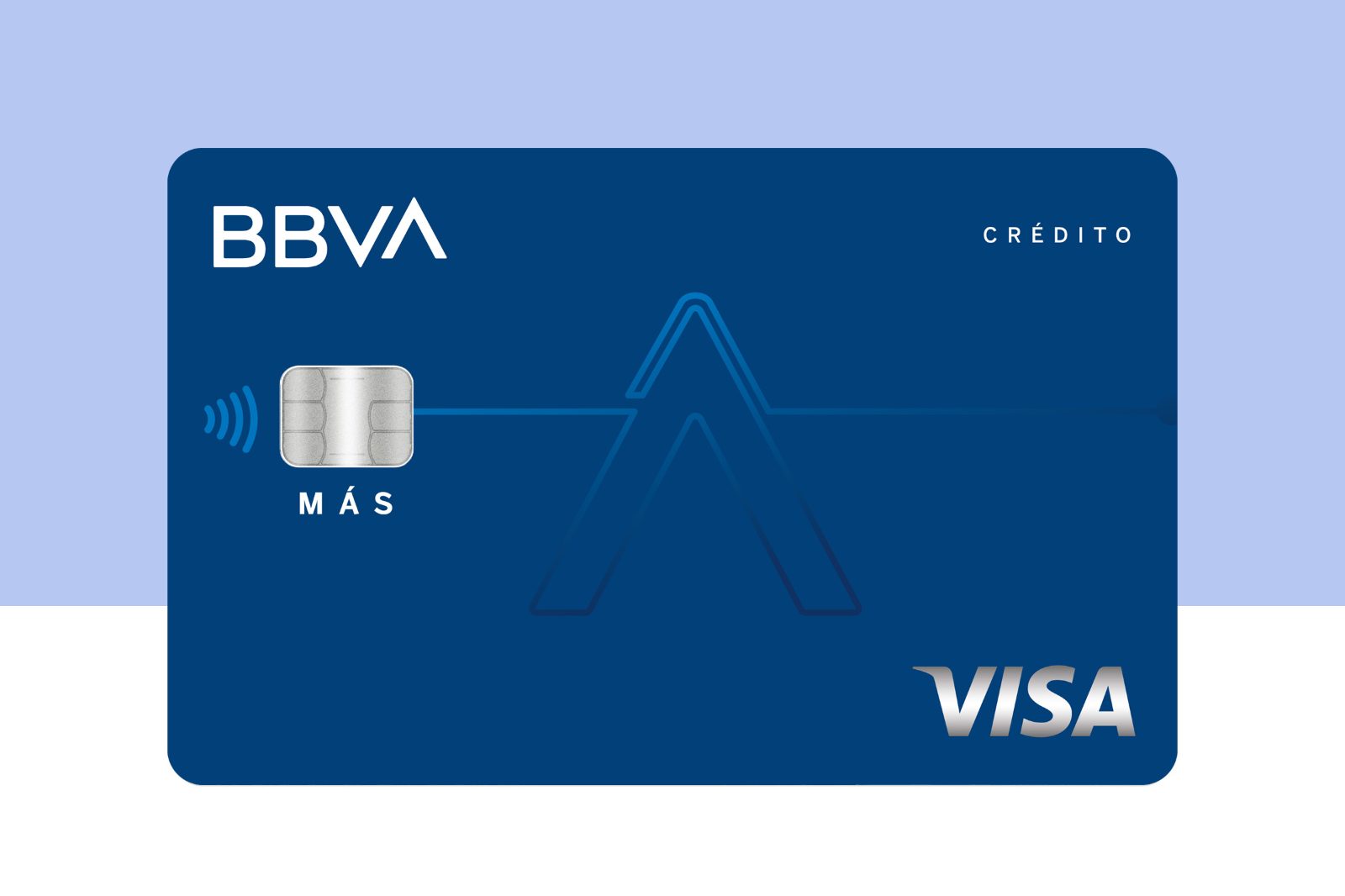Home>Finance>Why Is Financial Education Not Taught In Schools


Finance
Why Is Financial Education Not Taught In Schools
Modified: January 5, 2024
Discover why financial education is not taught in schools and how it affects your future. Gain insights into the importance of understanding finance for financial success.
(Many of the links in this article redirect to a specific reviewed product. Your purchase of these products through affiliate links helps to generate commission for LiveWell, at no extra cost. Learn more)
Table of Contents
- Introduction
- The Importance of Financial Education
- Obstacles to Implementing Financial Education in Schools
- Lack of Curriculum and Resources
- Testing and Standardized Curriculum Constraints
- Emphasis on Academic Subjects
- Teacher Training and Knowledge Gaps
- Cultural and Societal Factors
- The Role of Parents and Guardians
- Benefits of Financial Education
- Enhancing Financial Literacy and Empowerment
- Nurturing Responsible Financial Habits
- Preparing Students for Real-World Financial Challenges
- Policy Recommendations
- Integrating Financial Education into Existing Curricula
- Collaborative Efforts between Government, Schools, and Financial Institutions
- Teacher Training and Professional Development
- Engaging Parents and Community Stakeholders
- Conclusion
Introduction
In today’s rapidly changing world, financial literacy has become more important than ever. It is the knowledge and skills needed to make informed financial decisions, manage personal finances effectively, and navigate the complexities of the financial landscape. However, despite its significance, financial education is not taught in schools as widely as it should be.
Financial education equips individuals with the tools they need to make sound financial choices, budget effectively, save for the future, and invest wisely. It empowers people to understand concepts such as compound interest, credit scores, mortgages, and retirement planning. These skills are crucial for long-term financial well-being and are essential for achieving personal and professional goals.
While other subjects like math, science, and literature are emphasized in schools, financial education often takes a backseat. This begs the question: why is financial education not taught in schools? There are several obstacles preventing the implementation of comprehensive financial education in the education system, which we will explore in this article.
First, we will discuss the lack of curriculum and resources dedicated to financial education. Many schools do not have a specific curriculum for teaching financial literacy or lack the resources to effectively teach the subject. Additionally, the emphasis on standardized testing and rigid curricula further limits the inclusion of financial education in schools.
Furthermore, the educational system predominantly focuses on academic subjects, which leaves little room for teaching practical life skills such as financial literacy. Teacher training and knowledge gaps regarding financial education are also significant hurdles. Many educators are not adequately prepared to teach financial concepts, leading to a lack of confidence and effectiveness in the classroom.
Cultural and societal factors also contribute to the absence of financial education in schools. Financial topics can be seen as taboo or considered the responsibility of parents and guardians, rather than the education system. This mindset often leads to a lack of awareness and understanding of the importance of financial education.
Despite these challenges, the benefits of financial education cannot be understated. Integrating financial education into the school curriculum can enhance financial literacy and empower students to make informed financial decisions from an early age. It also instills responsible financial habits and equips students with the skills needed to navigate real-world financial challenges.
In the following sections, we will explore the obstacles in greater detail and propose policy recommendations to overcome them. By addressing these barriers and prioritizing financial education in schools, we can help ensure that today’s students become financially literate adults who are well-equipped to thrive in an increasingly complex financial world.
The Importance of Financial Education
Financial education plays a crucial role in equipping individuals with the knowledge and skills necessary to navigate the complexities of the modern financial landscape. Here are some key reasons why financial education is of utmost importance:
- Empowerment: Financial education empowers individuals to take control of their personal finances. It provides them with the knowledge needed to make informed financial decisions and avoid common pitfalls. By understanding concepts such as budgeting, savings, and investments, individuals are better equipped to achieve their financial goals and secure their future.
- Financial Literacy: In today’s society, financial literacy is a fundamental life skill. It involves understanding basic financial concepts and being able to apply them to real-life situations. Financially literate individuals are more likely to make responsible financial decisions, manage their debt effectively, and avoid financial scams and fraud.
- Long-Term Financial Well-Being: Financial education emphasizes the importance of long-term financial planning. It encourages individuals to think about their retirement savings, investment strategies, and financial goals. By starting early with financial education, individuals can develop good financial habits that will benefit them throughout their lives.
- Economic Stability: When individuals have a strong foundation in financial literacy, it contributes to overall economic stability. With a financially educated population, there is a reduced risk of excessive debt, bankruptcy, and financial crises. Financially educated individuals are more likely to contribute to a prosperous and stable economy.
- Responsible Consumer Behavior: Financial education helps individuals become informed consumers. It enables them to understand the implications of credit card usage, loans, and interest rates. Financially educated individuals are more likely to make wise consumer choices, avoid unnecessary debt, and effectively manage their spending.
Without proper financial education, individuals are at a disadvantage when it comes to managing their personal finances. They may fall prey to predatory lending practices, accumulate significant debt, or miss out on valuable investment opportunities. By incorporating financial education into the school curriculum, we can provide students with the necessary tools to make sound financial decisions throughout their lives.
Obstacles to Implementing Financial Education in Schools
While the importance of financial education is evident, there are several significant obstacles that prevent its widespread implementation in schools. These obstacles contribute to the limited inclusion of financial education in the curriculum. Let’s explore some of the main challenges:
- Lack of Curriculum and Resources: One of the primary obstacles to implementing financial education in schools is the lack of dedicated curriculum and resources. Many schools do not have a well-defined financial education curriculum or access to appropriate teaching materials and resources. Without a structured curriculum, it becomes difficult for teachers to effectively incorporate financial education into their classrooms.
- Testing and Standardized Curriculum Constraints: The education system often places a heavy emphasis on standardized testing and a fixed curriculum. This focus leaves little room for subjects that are not tested or included in standardized exams. As a result, financial education, which is not typically a tested subject, is often marginalized or excluded from the curriculum to prioritize other subjects.
- Emphasis on Academic Subjects: The traditional education system tends to prioritize academic subjects such as math, science, and literature. While these subjects are undoubtedly important, practical life skills like financial literacy often take a backseat. The imbalance in curriculum priorities means that financial education is not given the attention it deserves.
- Teacher Training and Knowledge Gaps: Many educators have not received sufficient training or professional development opportunities to effectively teach financial education. As a result, there may be knowledge gaps or lack of confidence among teachers when it comes to explaining complex financial concepts to students. The lack of trained teachers hinders the effective implementation of financial education.
- Cultural and Societal Factors: Societal attitudes and perceptions towards financial education also pose challenges. Some cultural beliefs view financial matters as private or the responsibility of parents and guardians, rather than being seen as a necessary subject for schools to teach. This mindset creates a barrier to implementing financial education in schools as it is not widely recognized as a priority.
These obstacles prevent the comprehensive implementation of financial education in schools, leaving many students without the necessary knowledge and skills to navigate the financial world. However, acknowledging these challenges is the first step towards finding solutions and overcoming them. In the following sections, we will explore ways to address these obstacles and ensure that financial education becomes an integral part of the education system.
Lack of Curriculum and Resources
A significant obstacle to implementing financial education in schools is the lack of a dedicated curriculum and resources. Many schools do not have a well-defined financial education curriculum or access to appropriate teaching materials and resources. This scarcity makes it challenging for teachers to effectively incorporate financial education into their classrooms.
Without a structured curriculum, teachers may struggle to find the necessary guidance and resources to teach financial literacy effectively. This lack of direction can result in inconsistent or incomplete coverage of financial topics, leaving students without a comprehensive understanding of personal finance.
In addition to the absence of a curriculum, schools often lack the necessary resources needed to support financial education. Teaching financial concepts requires tangible resources such as textbooks, worksheets, online tools, and simulations. However, many schools do not have funding or access to these resources, further limiting the ability to provide quality financial education to students.
Additionally, the lack of resources extends beyond just educational materials. It also includes the absence of trained financial education specialists who can provide guidance and expertise to teachers and students. In order to effectively teach financial literacy, teachers need support from professionals who can offer insight into real-world financial practices and trends.
The lack of curriculum and resources creates a barrier to implementing comprehensive financial education in schools. Without a structured framework and access to necessary materials, teachers may struggle to cover all essential financial topics and provide students with the practical knowledge and skills needed to navigate the financial landscape.
To address this issue, it is crucial for educational institutions and policymakers to prioritize the development of a dedicated financial education curriculum. This curriculum should outline the key concepts, skills, and learning outcomes that students should achieve at each grade level. It should provide a roadmap for teachers to effectively teach financial literacy in a structured and comprehensive manner, ensuring consistent coverage across schools.
Furthermore, efforts should be made to allocate resources specifically for financial education. This includes providing schools with funding to acquire appropriate textbooks, online resources, and interactive tools to support the teaching and learning of financial literacy. It may also involve partnering with financial institutions and organizations that specialize in financial education to provide schools with the necessary resources and expertise.
By addressing the lack of curriculum and resources, schools can better equip students with the knowledge and skills needed to make informed financial decisions and set themselves up for a secure financial future.
Testing and Standardized Curriculum Constraints
Another significant obstacle to implementing financial education in schools is the emphasis on standardized testing and the constraints imposed by a fixed curriculum. The education system places a primary focus on subjects that are tested and included in standardized exams, often leaving little room for subjects like financial education.
Standardized testing aims to measure student performance and grade schools based on academic achievements. As a result, schools may prioritize subjects that are directly assessed in these exams, such as math, science, and language arts. Unfortunately, financial education does not typically fall within the scope of these assessments, leading to limited attention and resources allocated to teaching the subject.
The pressure on schools to meet performance targets can create an environment where non-tested subjects, like financial education, are marginalized or overlooked in the curriculum. As a result, students may not receive the necessary knowledge and skills to navigate the complex financial landscape.
Moreover, the fixed curriculum often leaves little flexibility for the inclusion of additional subjects such as financial education. The curriculum is already packed with core academic subjects, leaving limited time for teachers to address topics outside the prescribed curriculum.
To overcome this obstacle, it is essential to advocate for the recognition and inclusion of financial education as a vital component of the curriculum. Efforts should be made to revise standardized exams to incorporate questions or sections related to financial knowledge and skills. This recognition will incentivize schools to allocate resources and time towards teaching financial education.
Additionally, there should be a push for flexibility in the curriculum, allowing schools to adapt and integrate financial education without compromising the teaching of core subjects. This flexibility could be achieved through the development of interdisciplinary themes that connect financial concepts with existing subjects like math, social studies, or even language arts.
Furthermore, policymakers and educational institutions should actively promote the importance of financial education and its potential benefits for students’ long-term well-being. This can help generate support and awareness among stakeholders, leading to a shift in mindset and a greater willingness to prioritize financial education within the standardized curriculum.
By addressing the constraints imposed by testing and standardized curriculum, schools can provide students with the comprehensive financial education they need to make informed decisions and prosper in their personal and professional lives.
Emphasis on Academic Subjects
One of the obstacles to implementing financial education in schools is the predominant emphasis on academic subjects. The traditional education system tends to prioritize subjects such as math, science, and literature, which are considered essential for academic success and higher education pursuits. Unfortunately, this emphasis often leaves little room for teaching practical life skills like financial literacy.
Academic subjects are typically given more instructional time and resources, leading to a curriculum that heavily focuses on these areas. While these subjects are undoubtedly important, the lack of emphasis on financial education can leave students ill-prepared to navigate the complexities of personal finance in adulthood.
Moreover, the perception that academic subjects are more valuable for future success can influence the attitudes and priorities of students, parents, and even school administrators. As a result, the teaching of financial education can be perceived as less important or even unnecessary in comparison to academic subjects.
To address this obstacle, a shift in mindset is necessary to recognize the importance of financial education as an essential life skill. Educators, parents, and policymakers must understand that financial literacy is not a standalone subject. It is an integral part of preparing students for real-world responsibilities and challenges.
One approach to integrating financial education into the curriculum is to find connections between financial concepts and existing academic subjects. For example, math classes can include lessons on compound interest and budgeting, while social studies classes can explore economic principles and personal finance within the context of society.
By incorporating financial literacy into existing academic subjects, schools can present it as complementary rather than competing with traditional subjects. This approach not only addresses the limitations imposed by time constraints but also reinforces the notion that financial education is an important aspect of overall education.
Furthermore, it is crucial to educate students about the long-term benefits and relevance of financial literacy beyond the classroom. By highlighting the practical applications of financial knowledge and skills, students can better understand the importance of financial education and become more engaged in their learning.
Additionally, schools can consider integrating practical experiences and activities into the curriculum, such as simulations, case studies, and real-world projects. These hands-on approaches allow students to directly apply financial concepts and develop critical thinking skills while fostering a deeper understanding of how financial decisions impact their lives.
By shifting the emphasis towards a more holistic approach to education, which includes financial literacy as a vital component, schools can better prepare students for the challenges and responsibilities they will face as adults.
Teacher Training and Knowledge Gaps
One of the obstacles to implementing financial education in schools is the lack of adequate teacher training and knowledge gaps. Many educators have not received sufficient training or professional development opportunities to effectively teach financial education concepts to their students. As a result, they may lack the confidence and expertise needed to deliver comprehensive financial education in the classroom.
Financial education requires a specialized set of knowledge and skills that may not be part of a teacher’s initial training or certification. Without proper training, educators may feel ill-equipped to teach complex financial concepts, resulting in limited coverage or superficial understanding of the subject matter.
Furthermore, the dynamic nature of the financial landscape requires teachers to stay updated with the latest trends, regulations, and financial products. Without ongoing professional development opportunities, teachers may struggle to keep their knowledge current, leading to outdated or inaccurate information being passed on to students.
To overcome this obstacle, it is crucial to invest in teacher training and provide ongoing professional development opportunities specifically focused on financial education. This can include workshops, conferences, and online courses dedicated to enhancing educators’ understanding of financial concepts and teaching methodologies.
Collaboration with universities, financial institutions, and experts in the field of finance can also provide valuable resources and insights for teacher training programs. These partnerships can offer specialized training modules, webinars, and mentorship opportunities to equip teachers with the knowledge and skills needed to effectively teach financial education.
Additionally, financial education curriculum materials and resources should be made readily available to teachers. This includes textbooks, lesson plans, and online resources specifically designed for educators. Providing teachers with comprehensive resources can support their instruction and help bridge knowledge gaps.
It is also important to create a supportive learning environment where teachers can collaborate and share best practices related to financial education. Establishing communities of practice or professional learning networks can enable educators to learn from one another and exchange ideas, ultimately enhancing their teaching effectiveness.
By prioritizing teacher training and addressing knowledge gaps, schools can ensure that educators have the confidence, knowledge, and resources needed to deliver quality financial education to their students. This, in turn, will contribute to a generation of financially literate individuals who are better prepared to make informed decisions and navigate the complexities of the financial world.
Cultural and Societal Factors
Cultural and societal factors play a significant role as obstacles to implementing financial education in schools. Attitudes, perceptions, and societal norms regarding financial matters can influence the recognition and prioritization of financial education in the education system.
In some cultures, financial matters may be considered private or the responsibility of parents and guardians, rather than an area where schools should intervene. Financial literacy is often viewed as a personal skill that individuals should learn within the family unit. This mindset can create a barrier to implementing financial education in schools, as it may not be widely recognized as a priority or a necessary component of the curriculum.
Societal beliefs and values around money can also impact the emphasis given to financial education. The pursuit of academic excellence and professional success may overshadow the importance of practical life skills like financial literacy. Consequently, schools may allocate more time and resources to academic subjects that are perceived to lead to higher career prospects, potentially neglecting financial education.
To address these cultural and societal factors, it is essential to raise awareness and change perceptions regarding the importance of financial education. Advocacy efforts should focus on demonstrating the relevance and benefits of financial literacy in individuals’ lives, regardless of cultural background or societal beliefs.
Engaging parents and community stakeholders is crucial in promoting the integration of financial education in schools. Educating parents about the importance of financial literacy and how it can positively impact their children’s future can help garner support and create a collaborative environment between schools and families.
Offering workshops or parent education programs focused on financial literacy can empower parents to take an active role in their children’s financial education. This collective effort can reinforce the message that financial education is a shared responsibility and deserves attention both at home and in schools.
Additionally, collaboration with community organizations, financial institutions, and local businesses can provide valuable partnerships to support financial education initiatives. These partnerships can bring real-world perspectives and expertise to the classroom and help bridge the gap between academic learning and practical application.
By addressing cultural and societal factors, and involving parents and community stakeholders, schools can create an environment that recognizes the importance of financial education and fosters a collective effort to ensure that students receive the necessary knowledge and skills to navigate the financial world.
The Role of Parents and Guardians
In addition to the education system, parents and guardians play a vital role in promoting financial education and instilling good financial habits in their children. The support and involvement of parents are crucial for reinforcing the concepts and skills learned in school and translating them into practical application in daily life.
Parents and guardians have the opportunity to be a child’s first and most influential teachers when it comes to money management and financial literacy. By being open and transparent about financial topics, parents can create a positive environment that encourages discussions and fosters a healthy relationship with money.
One effective way parents can teach financial literacy is by setting a strong financial example in their own lives. Children often learn by observing the financial behaviors of their parents. When parents demonstrate responsible spending, saving, and budgeting habits, children are more likely to internalize these behaviors and adopt them as well.
In addition to setting a good example, parents can actively engage children in financial discussions and decision-making processes. This could include involving children in budgeting, discussing household expenses, and teaching them about saving and investing. These experiences provide children with practical knowledge and skills that can serve them well into adulthood.
Parents can also encourage entrepreneurship and financial independence by supporting their children in entrepreneurial ventures or part-time jobs. These experiences allow children to learn firsthand about financial responsibility, money management, and the value of hard work.
Moreover, parents can supplement the financial education provided in schools by seeking out additional resources and educational materials. There are numerous online platforms, books, and games that focus on financial education for children and teenagers. Engaging in these resources together can facilitate discussions and improve financial literacy within the family unit.
However, it is important to recognize that not all parents may have the necessary knowledge or confidence to teach financial literacy effectively. In such cases, schools and other community organizations can play a role in providing support and resources to parents, offering workshops or educational programs that empower parents to become better equipped to teach financial education at home.
By actively involving parents and guardians in the process of financial education, schools can reinforce the concepts and skills taught in the classroom, resulting in a more comprehensive and impactful learning experience for students. The collaboration between parents, guardians, and schools is essential in equipping children with the necessary financial knowledge and skills to succeed in managing their personal finances and making informed financial decisions throughout their lives.
Benefits of Financial Education
Financial education provides individuals with valuable knowledge and skills that are essential for managing personal finances effectively and making informed financial decisions. Here are some key benefits of financial education:
- Enhancing Financial Literacy and Empowerment: Financial education equips individuals with the knowledge and understanding of financial concepts, allowing them to navigate the complexities of the financial world with confidence. It empowers individuals to make informed decisions, leading to improved financial well-being and control over their financial future.
- Nurturing Responsible Financial Habits: Financial education instills responsible financial habits from an early age. It teaches individuals the importance of budgeting, saving, and living within their means. By developing these habits early on, individuals are better equipped to manage their finances, avoid debt, and build a solid financial foundation.
- Preparing Students for Real-World Financial Challenges: Financial education provides practical knowledge and skills necessary to navigate real-world financial challenges. It covers subjects such as understanding credit, managing debt, and making sound investment decisions. Equipped with this knowledge, individuals are better prepared to handle financial situations and make informed choices throughout their lives.
- Empowering Individuals to Achieve Financial Goals: Financial education empowers individuals to set financial goals and take the necessary steps to achieve them. It provides them with the tools to plan for major life events like buying a home, starting a business, or saving for retirement. With a strong financial education, individuals can make strategic decisions and work towards their aspirations.
- Protecting Against Financial Fraud and Scams: Financial education not only equips individuals with the knowledge to make sound financial decisions but also helps them recognize and protect themselves from financial fraud and scams. It raises awareness about common financial scams and teaches individuals how to safeguard their personal and financial information.
Overall, financial education plays a crucial role in improving financial literacy and empowering individuals to take control of their financial well-being. It provides them with the skills needed to make informed decisions, build strong financial foundations, and navigate the complex financial landscape. By integrating financial education into school curricula and promoting its importance within communities, we can ensure that individuals are equipped with the knowledge and skills they need to thrive in an increasingly financial world.
Enhancing Financial Literacy and Empowerment
One of the primary benefits of financial education is its ability to enhance financial literacy and empower individuals to take control of their financial lives. Financial literacy refers to the knowledge and understanding of financial concepts and skills that enable individuals to make informed financial decisions and manage their money effectively.
Financial education equips individuals with the necessary knowledge and skills to navigate the complexities of the financial landscape. It covers various topics, including budgeting, savings, investing, debt management, insurance, and retirement planning. By providing individuals with a solid foundation in these areas, financial education enhances their financial literacy and equips them to make sound financial decisions that align with their goals and values.
With increased financial literacy comes empowerment. Financially literate individuals have the confidence and understanding to take control of their financial well-being. They can analyze financial information, assess risks, and evaluate financial products and services. This empowerment enables individuals to make choices that align with their long-term financial goals and values, rather than being reliant on external advice or succumbing to financial stress and uncertainty.
Moreover, financial education instills a sense of empowerment by demystifying financial concepts and breaking down barriers to financial knowledge. It empowers individuals to ask critical questions, seek reliable information, and make informed decisions. By providing individuals with the tools to understand and navigate financial systems, financial education helps to level the playing field and reduce power imbalances between individuals and financial institutions.
Financially empowered individuals are also better equipped to handle unexpected financial challenges. They have a solid understanding of financial management principles, which enables them to adapt and make confident decisions during times of financial hardship or economic downturns. This resilience is particularly valuable in promoting long-term financial well-being and stability.
Furthermore, financial education is not just about teaching individuals how to manage money effectively; it is about promoting financial independence and self-sufficiency. By equipping individuals with the knowledge and skills to handle their finances, financial education fosters a sense of personal responsibility and accountability. It encourages individuals to take an active role in their financial lives and seek opportunities for financial growth and security.
Ultimately, enhancing financial literacy and empowerment through financial education can positively impact individuals, families, and communities. It equips individuals with the skills and confidence to make informed financial decisions, plan for the future, and navigate the financial landscape with greater autonomy and resilience. By prioritizing financial education, we can empower individuals to take control of their financial lives and work towards a more secure and prosperous future.
Nurturing Responsible Financial Habits
Financial education plays a crucial role in nurturing responsible financial habits in individuals. It equips them with the knowledge and skills needed to make informed financial decisions, manage their money effectively, and develop a solid foundation for long-term financial well-being.
One of the primary goals of financial education is to teach individuals the importance of budgeting and living within their means. It helps them understand the concept of income and expenses, and how to allocate their resources wisely. By learning how to create and stick to a budget, individuals can develop responsible spending habits and avoid unnecessary debt.
Financial education also emphasizes the importance of saving and building an emergency fund. It educates individuals on the potential benefits of compound interest and the power of saving for future goals. By instilling a habit of regular saving, financial education encourages individuals to prioritize financial security and be prepared for unexpected expenses.
In addition to saving, financial education teaches individuals about the responsible use of credit and managing debt. It equips them with the knowledge to understand interest rates, credit scores, and borrowing options. This understanding enables individuals to make informed decisions when taking on debt and develop strategies to pay it off responsibly.
Another aspect of fostering responsible financial habits is teaching individuals about the importance of long-term financial planning, such as retirement planning. Financial education empowers individuals to think about their future financial goals and take steps to achieve them. It introduces concepts such as investment strategies, asset allocation, and the potential benefits of starting early with retirement savings.
Financial education also helps individuals develop critical thinking skills when it comes to making financial decisions. It encourages them to evaluate financial products and services, compare options, and consider the long-term implications of their choices. By nurturing these skills, financial education enables individuals to make responsible financial decisions and avoid falling victim to predatory lending or fraudulent schemes.
Furthermore, financial education encourages individuals to develop a mindset of financial resilience. It teaches them how to weather financial setbacks and bounce back from challenges. By understanding the importance of building an emergency fund and establishing good financial habits, individuals are better equipped to handle unexpected expenses and financial downturns.
Overall, financial education is instrumental in nurturing responsible financial habits. By equipping individuals with the knowledge and skills needed to manage money effectively and make informed financial decisions, it promotes financial responsibility and empowers individuals to create a solid financial foundation for their future.
Preparing Students for Real-World Financial Challenges
Financial education plays a vital role in preparing students for the real-world financial challenges they will encounter as adults. It equips them with the knowledge and skills necessary to navigate the complex landscape of personal finance and make informed decisions that will impact their financial well-being.
One of the key aspects of financial education is teaching students about the basic financial concepts and tools they will encounter in their daily lives. This includes understanding concepts such as budgeting, saving, borrowing, investing, and managing debt. By providing students with a solid foundation in these areas, financial education ensures they are well-prepared to face the financial realities of adulthood.
Financial education also covers topics such as understanding credit scores, managing bank accounts, and working with financial institutions. This knowledge enables students to confidently navigate the financial system, whether it’s opening a bank account, applying for a loan, or understanding the terms and conditions of financial products.
Moreover, financial education emphasizes the importance of responsible consumer behavior. It teaches students how to make informed decisions when purchasing goods and services, how to evaluate the potential costs and benefits, and how to avoid unnecessary and impulsive spending. This helps students develop the skills to critically analyze advertising messages and make wise financial choices.
Financial education goes beyond theoretical knowledge and aims to provide students with practical skills to handle real-life financial situations. For example, students may learn about the process of renting an apartment, buying a car, or planning for major life events like marriage and starting a family. These real-world scenarios help students understand the financial implications and responsibilities that come with adulthood.
Additionally, financial education equips students with the ability to navigate complex financial decisions such as investing and retirement planning. By introducing concepts such as diversification, risk management, and the power of compound interest, students gain the tools needed to make informed investment decisions and plan for their future financial security.
By preparing students for real-world financial challenges, financial education empowers them to make sound financial decisions and avoid common pitfalls. It promotes self-sufficiency and helps students become financially independent as they transition into adulthood.
Ultimately, financial education is essential for equipping students with the knowledge, skills, and confidence to successfully manage their personal finances. By providing them with the necessary tools to tackle real-world financial challenges, financial education sets students on the path to financial success and a more secure future.
Policy Recommendations
To ensure the effective implementation of financial education in schools, policymakers and education stakeholders should consider the following recommendations:
- Integrating Financial Education into Existing Curricula: Financial education should be integrated into the existing curricula of schools at various grade levels. Instead of being seen as a standalone subject, financial literacy can be woven into subjects like math, social studies, and even language arts. This integration ensures that financial education is both comprehensive and relevant to students’ overall education.
- Collaborative Efforts between Government, Schools, and Financial Institutions: Collaboration is key to ensuring the successful implementation of financial education. Governments, schools, and financial institutions should collaborate to develop and implement financial education initiatives. Financial institutions can provide expertise, resources, and real-world insights, while schools can provide the platform to deliver financial education to students.
- Teacher Training and Professional Development: Teachers need adequate training and professional development opportunities to effectively teach financial education. Investing in comprehensive training programs and ongoing professional development ensures that educators have the necessary knowledge and skills to deliver quality financial education in the classroom.
- Engaging Parents and Community Stakeholders: Parents and community stakeholders play a crucial role in supporting financial education. Schools should actively engage parents by providing workshops, resources, and opportunities for involvement. Community stakeholders, such as local businesses and nonprofit organizations, can also contribute by offering financial literacy programs or mentorship opportunities for students.
Furthermore, policymakers should consider the following initiatives:
- Curriculum Development and Accessible Resources: Developing a standardized financial education curriculum with clear learning outcomes and providing accessible resources to schools is vital. These resources can include textbooks, online tools, simulations, and professional-grade materials specifically designed for teaching financial literacy.
- Evaluation and Assessment Measures: Implementing evaluation and assessment measures for financial education programs ensures accountability and effectiveness. It allows policymakers and educators to monitor the impact of financial education and make necessary adjustments to improve outcomes.
- Integration with Technology: Utilizing technology platforms and digital tools can enhance the delivery of financial education. Online courses, mobile applications, and interactive learning platforms can engage students and provide personalized learning experiences.
- Partnerships with Financial Institutions: Collaborating with financial institutions can provide valuable resources, expertise, and financial support for financial education initiatives. These partnerships can also help bridge the gap between classroom learning and real-world financial practices.
By implementing these policy recommendations, policymakers can ensure that financial education becomes an integral part of the education system. These efforts will equip students with the necessary knowledge and skills to make informed financial decisions, fostering a financially literate society prepared to navigate the complexities of the modern financial world.
Integrating Financial Education into Existing Curricula
One key policy recommendation to promote financial education is to integrate it into existing curricula across various subjects and grade levels. Rather than treating financial education as a standalone subject, it can be woven into subjects such as math, social studies, and language arts. This integration ensures that financial education is both comprehensive and relevant to students’ overall education.
Integrating financial education into existing curricula allows students to learn financial concepts and skills within the context of other subjects. For example, in math classes, students can learn about budgeting, calculating interest, and understanding financial data. In social studies, they can explore economic principles, the history of money, and the impact of financial decisions on society.
By incorporating financial education into various subjects, students can develop a multidisciplinary understanding of financial concepts and their real-life applications. This integrated approach provides a holistic view of financial literacy, allowing students to connect financial knowledge with other academic concepts and develop critical thinking skills.
Integrating financial education can also help address concerns about limited instructional time and overcrowded curricula. By embedding financial concepts into existing subjects, schools can ensure that financial education is given appropriate attention without sacrificing the teaching of other core subjects.
Additionally, integrating financial education into existing curricula fosters collaboration among teachers from different subject areas. Teachers can work together to plan lessons that incorporate financial concepts, fostering interdisciplinary collaboration and sharing effective teaching practices.
To support the integration of financial education into existing curricula, professional development opportunities should be provided to teachers. They should receive training and resources specific to teaching financial education within their respective subjects. This training can equip teachers with the knowledge and skills needed to effectively incorporate financial concepts into their lessons and deliver engaging and interactive financial education experiences to their students.
Moreover, educational institutions should provide access to curriculum materials and resources that integrate financial education into existing subjects. Teachers should have access to textbooks, online resources, and teaching materials tailored to seamlessly integrate financial concepts into their lessons.
By integrating financial education into existing curricula, schools can ensure that students receive a comprehensive financial education that is relevant to their lives. This approach fosters a deeper understanding of financial concepts and enhances students’ critical thinking and decision-making skills within the context of different academic subjects. By equipping students with financial literacy across disciplines, we can empower them to make informed financial decisions and navigate the complexities of the modern world.
Collaborative Efforts between Government, Schools, and Financial Institutions
Effective implementation of financial education requires collaborative efforts between government entities, schools, and financial institutions. By working together, these stakeholders can enhance the delivery and impact of financial education initiatives, ensuring that students receive comprehensive and relevant financial literacy education.
Government entities play a crucial role in driving financial education policies and initiatives. They can establish guidelines and standards for financial education in schools, ensuring that it is prioritized and integrated into the curriculum. Governments can also allocate funding to support the development of financial education resources, teacher training, and program evaluation.
Financial institutions have a wealth of expertise and resources that can greatly enhance financial education initiatives. Collaboration with financial institutions can provide valuable insights into real-world financial practices, industry trends, and technological advancements. Financial institutions can contribute by developing and sharing educational materials, sponsoring financial literacy programs, and hosting workshops or events that involve students, parents, and teachers.
Schools serve as the primary platform for delivering financial education to students. They can collaborate with government and financial institutions to implement effective financial education programs. Schools can also tap into the expertise of financial professionals or invite guest speakers to provide real-world insights and practical examples of financial concepts in action.
Collaborative efforts between government, schools, and financial institutions can take several forms:
- Developing Comprehensive Financial Education Programs: Government entities can work collaboratively with financial institutions to develop comprehensive financial education programs that align with the needs of students. This collective effort ensures that financial education programs cover a wide range of topics, are based on industry best practices, and incorporate real-life examples and case studies.
- Sharing Resources and Expertise: Financial institutions can contribute their expertise by developing educational materials, resources, and interactive tools that align with the curriculum. These resources can be shared with schools and teachers, enhancing the quality of financial education delivery in the classroom.
- Providing Professional Development Opportunities: Financial institutions can partner with schools to offer professional development opportunities for teachers. This can include workshops, seminars, or online training sessions that focus on enhancing teachers’ understanding of financial concepts and effective pedagogical strategies for teaching financial education.
- Hosting Financial Literacy Workshops and Events: Financial institutions can collaborate with schools to host financial literacy workshops or events for students, parents, and the wider community. These events can raise awareness about the importance of financial education, provide practical tips for managing personal finances, and offer access to expert advice and resources.
- Offering Mentorship and Internship Programs: Financial institutions can provide opportunities for students to gain real-world exposure through mentorship programs or internships. This hands-on experience allows students to apply their financial knowledge, gain practical skills, and understand the relevance of financial education in the workplace.
By fostering collaborative efforts between government, schools, and financial institutions, financial education can benefit from a wealth of expertise, resources, and real-world insight. This collaboration ensures that financial education programs are comprehensive, effective, and aligned with the needs of students, ultimately equipping them with the necessary skills and knowledge to make informed financial decisions throughout their lives.
Teacher Training and Professional Development
A crucial aspect of effective financial education implementation is providing teachers with comprehensive training and ongoing professional development opportunities. By investing in teacher training, schools can ensure that educators have the necessary knowledge and skills to deliver high-quality financial education and support students in developing their financial literacy.
Financial education requires specialized expertise that may not be included in a teacher’s initial training or certification. To address this, dedicated training programs should be developed to equip teachers with the knowledge of financial concepts, effective teaching strategies, and resources specific to financial education.
Teacher training programs should cover a range of topics related to financial literacy, including budgeting, saving, investing, credit, and consumer awareness. Teachers need to have a solid understanding of these concepts to effectively educate students on personal finance matters.
Additionally, professional development opportunities should be provided to teachers to support their continuous growth and development in the area of financial education. Ongoing training can enhance their instructional skills, help them stay up-to-date with industry trends, and provide opportunities for collaboration and knowledge sharing.
Financial institutions and organizations can play a vital role in providing teacher training and professional development. They can offer expertise and resources specific to financial education, such as lesson plans, curriculum materials, and financial simulations. Collaborative partnerships between financial institutions and educational institutions can help bridge the knowledge gap and ensure that teachers have access to up-to-date and relevant resources.
Professional development opportunities can take various forms, including workshops, conferences, webinars, and online courses. These opportunities should be tailored to address the specific needs of teachers, catering to various teaching styles, grade levels, and knowledge levels in financial education.
Moreover, schools can foster a culture of continuous learning and professional growth by providing time and support for teachers to engage in professional development activities. This can include allocating dedicated professional development days, establishing financial education communities of practice, or encouraging teachers to pursue advanced certifications or degrees in financial education.
By investing in teacher training and professional development, schools can ensure that educators feel confident and competent in delivering financial education. Well-trained teachers can create engaging and interactive learning experiences for students, imparting valuable financial knowledge and skills that students can carry with them throughout their lives.
Furthermore, ongoing professional development can empower teachers to adapt to evolving financial landscapes, stay informed about state-of-the-art teaching practices, and continuously improve their instructional strategies to meet the diverse needs of students.
Overall, investing in teacher training and professional development demonstrates a commitment to providing quality financial education to students. By equipping teachers with the necessary knowledge, skills, and resources, schools can build a strong foundation for financial literacy and empower future generations to make informed financial decisions.
Engaging Parents and Community Stakeholders
Engaging parents and community stakeholders is crucial for the successful implementation of financial education initiatives in schools. By involving parents and community members, schools can create a collaborative learning environment that reinforces the importance of financial education and extends learning beyond the classroom.
Parents play a significant role in shaping their children’s financial behaviors and attitudes. Engaging parents in financial education allows them to become active participants in their child’s learning journey and empowers them to support and reinforce financial lessons at home.
Schools can engage parents by providing workshops, seminars, or information sessions focused on financial education. These sessions can educate parents about financial literacy concepts and practical strategies for fostering good financial habits at home. By equipping parents with resources and knowledge, schools can help create a consistent and reinforcing message about financial literacy between school and home environments.
Schools can also encourage parents to become actively involved in their child’s financial education by providing take-home materials, reading lists, or online resources that parents and children can explore together. This encourages family discussions about financial topics and reinforces the importance of financial literacy as a shared responsibility.
Moreover, community stakeholders such as local businesses, nonprofit organizations, and financial institutions can play a valuable role in supporting financial education efforts. Partnerships with community stakeholders can provide additional resources, expertise, and opportunities for students to further develop their financial literacy skills.
Community stakeholders can contribute by offering financial literacy workshops or programs, hosting career fairs that highlight financial careers, or providing mentorship opportunities for students. By connecting students with real-world financial experiences and professionals, schools can enhance students’ understanding of financial concepts and the relevance of financial education in their lives.
Collaboration between schools and community stakeholders can also provide students with opportunities to apply their financial knowledge in practical ways. For instance, local businesses may offer work-study programs or internships where students can gain hands-on experience in budgeting, saving, and managing finances in a professional setting.
Engaging community stakeholders and developing partnerships between schools and local organizations fosters a sense of collective responsibility for financial education. These collaborations can raise awareness about the importance of financial literacy as a life skill and generate support for the integration of financial education into the school curriculum.
By fostering strong partnerships with parents and community stakeholders, schools can create a comprehensive ecosystem of support for financial education. This collaborative approach reinforces the value of financial literacy, expands learning opportunities beyond the classroom, and empowers students to become financially capable individuals in their community.
Conclusion
Financial education is a crucial component of a well-rounded education that equips individuals with the knowledge and skills needed to navigate the ever-changing financial landscape. Despite its importance, the implementation of financial education in schools faces various obstacles.
The lack of a dedicated curriculum and resources, the constraints of standardized testing, the emphasis on academic subjects, the need for teacher training, and cultural and societal factors all contribute to the limited inclusion of financial education in schools. However, addressing these obstacles is essential to ensure that students receive the comprehensive financial education they need to become financially literate adults.
The benefits of financial education are clear. It enhances financial literacy, nurtures responsible financial habits, prepares students for real-world financial challenges, and empowers individuals to make informed financial decisions. It also protects individuals from financial fraud and promotes economic stability.
To overcome the barriers to implementing financial education, several policy recommendations can be implemented. Integrating financial education into existing curricula, fostering collaboration between government, schools, and financial institutions, investing in teacher training and professional development, and engaging parents and community stakeholders are all critical steps towards creating a comprehensive financial education system.
By implementing these recommendations, students can receive a well-rounded financial education that prepares them for the challenges and opportunities of the financial world. Financial literacy becomes a lifelong skill that empowers individuals to make informed decisions, manage their finances effectively, and work towards their financial goals.
As policymakers, educators, parents, and community members join forces, the vision of a financially literate society becomes attainable. By prioritizing and integrating financial education into the fabric of our education system, we can ensure that future generations possess the essential knowledge and skills needed to navigate the complex financial landscape, secure their financial well-being, and contribute to a financially responsible society.














